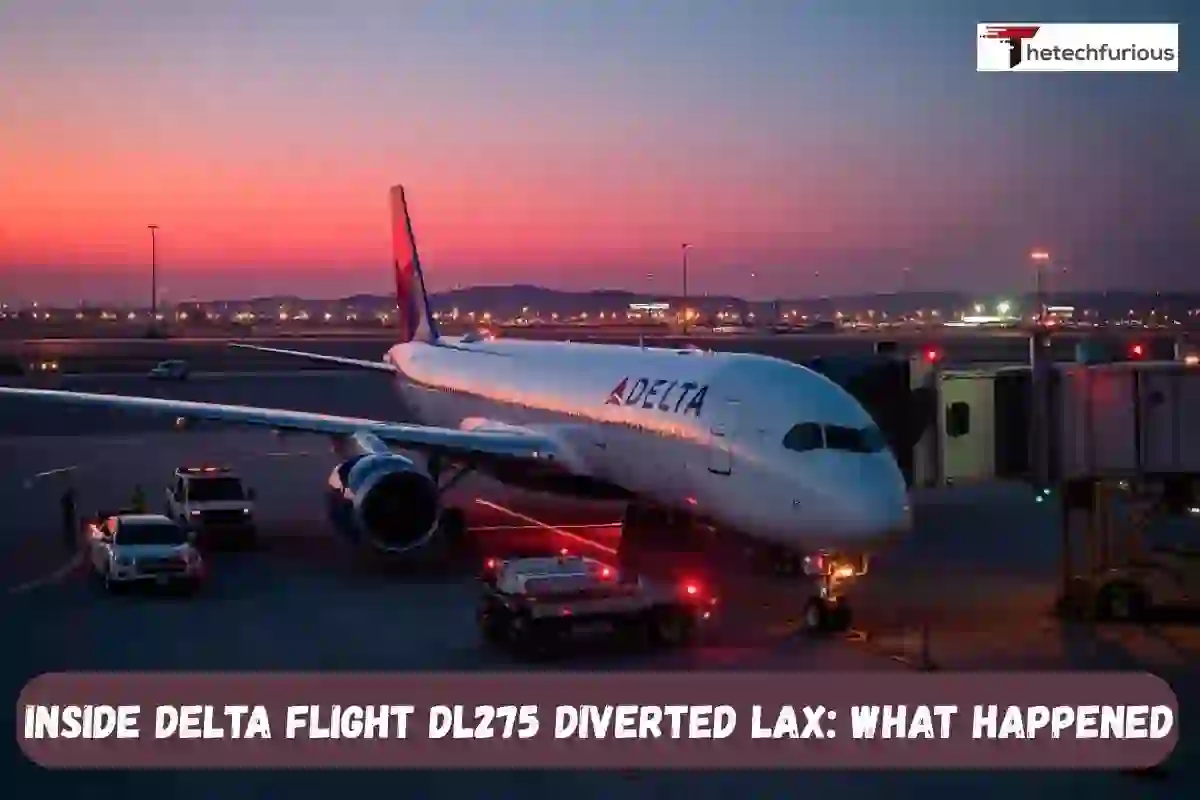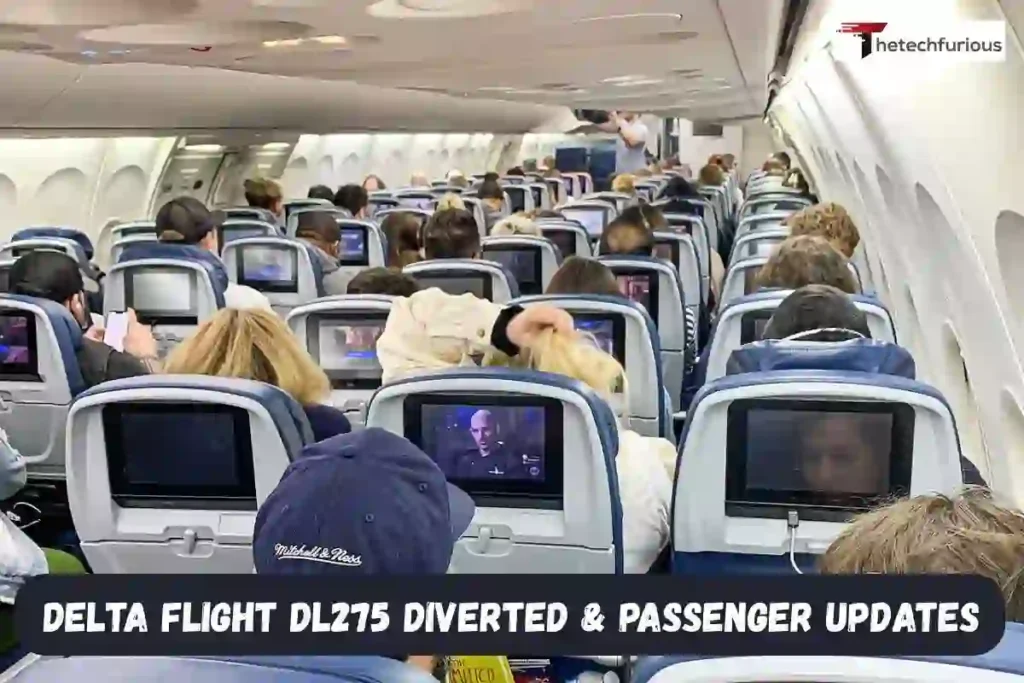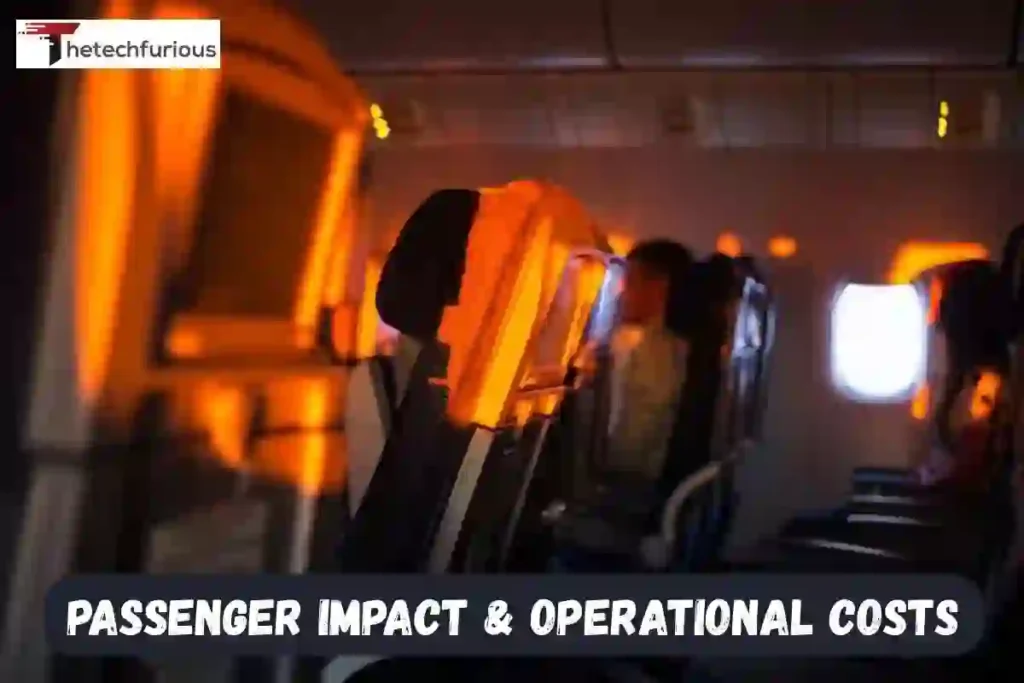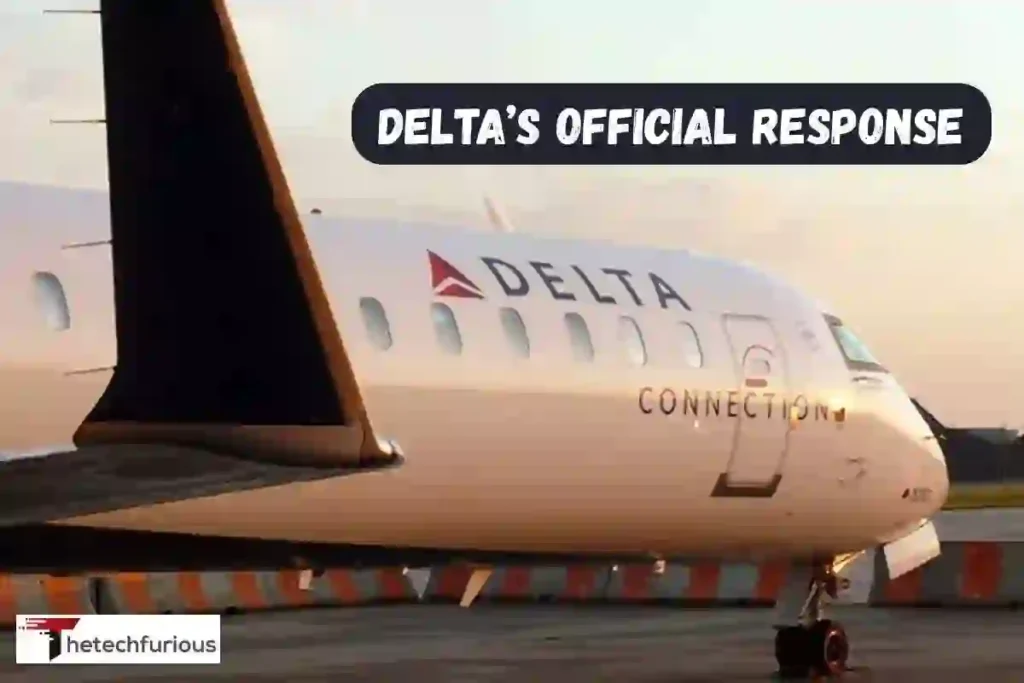Inside Delta Flight DL275 Diverted LAX: What Happened
The Delta flight DL275 landing in LAX has already been one of the hottest examples of airline accidents in

The Delta flight DL275 landing in LAX has already been one of the hottest examples of airline accidents in recent times in the United States, and reasonably so. To passengers, aircraft enthusiasts, and anybody who may be interested in the workings of airlines. The Delta Flight DL275 Diverted LAX story is not only a reflection of technical and safety issues applicable to modern long-haul flights, but also an approach to the crisis situation management of the airline company. Throughout this in-depth article, we will discuss what went on in DL275 and what its status is currently, why the diversion occurred, the impact on the passengers, the reaction of Delta, and what can be learned about the industry (as well as reef travelers) in the future.
What Was Delta Flight DL275
Delta Air Lines operates a booking transpacific flight known as Delta Flight DL275. The standard flight of DL275 (spotted in most of the news media, Delta Register DL275 flight towards LAX flight diversion) is the one that flies between Detroit Metropolitan Wayne County Airport (DTW) in TokyoGen Meete International Airport (HND). It is flown in Airbus A350-900 and powered by Rolls-Royce Trent XWB.
May 28, 2025 DL275 made Detroit in good time and was to have a pleasant long flight. But about five hours into the flight, when passing the North Pacific (under most definitions, a few miles south-west of Anchorage, Alaska). The flight crew members had noticed a source of trouble in one of its Trent XWB engines, the anti-ice mechanism.
Since the lessening of the snowfall on the engine parts during the high-altitude flight was facilitated by the anti-ice system. Which, upon freezing, is particularly dangerous in cold water over the expansive air way between the oceanic islands. This malfunction was considered severe enough to the crew than to fly to Tokyo any further and instead make ground stop at Los Angeles International Airport (LAX).
Read More: How To Optimize a Gaming Laptop for VR – Read Now!
The Diversion: Timeline & Technical Cause
The chronological overview, based on known reliable reports, of the course of action of the event and the technical details is known:
| Event | Time / Approximation | What Happened |
| Departure from DTW | On schedule, early evening (local) | Flight took off normally on its route to Tokyo. |
| Mid-flight (≈ 5 hours in) | Over the North Pacific, roughly southwest of Anchorage | The aircraft’s engine anti-ice system warning was triggered for one of the Rolls-Royce Trent XWB engines. Crew investigated. |
| Decision to Divert | Shortly after detection | Pilot, with consultation from Delta operations and ATC, decided that LAX was the most viable diversion airport, considering safety and technical support. |
| Landing at LAX | In the early hours local | The aircraft landed safely at Los Angeles International Airport, runway 06R per some reports, without injuries to passengers or crew. |
| Post-landing & Repairs | Following arrival | Engineers inspected and addressed the anti-ice system failure. The aircraft remained grounded for some duration for maintenance and checks. Passengers were rebooked as needed. |
What Is the Engine Anti-Ice System?
To appreciate the reasons behind the failure leading to a diversion, an additional aviation technical environment would be required:
- In-flight On high altitude flights (or over cold areas or oceanic routes), ice and frost on engine inlets, fan propellers, and other surfaces can reduce performance badly or even cause hazardous conditions. The anti-ice is a hot bleed air (that is supplied in previous compressor activities of the engine) applied to specific engine parts to ensure they are not frozen or to make sure that no ice is formed.
- Breaking down of this system does not imply loss of instant power of the engine but it eliminates the safety margin. Accumulation of ice may cause hindrances to airflow, sensor error, loss of thrust, or breakages. Safety decisions here are always conservative due to the transpacific routes being over remote routes that have fewer options of airports.
Read More: Flixfare: Your Favorite Place to Stream Movies & Shows
Delta Flight DL275 Diverted LAX Status & Passenger Updates

Whatever they are likely to be seeking when they search delta flight del275 diverted lax today or delta flight dl275 diverted lax status is:
- Current location of the plane (is it back into service? Is it repaired?)
- What is the cultural or whatever DELAY or reroute is it that caused the various passengers who were originally supposed to reach Tokyo?
- What service and support has Delta given?
And this is what they say in these places:
- Once the plane landed at LAX, it was grounded to have a complete check-up of the fault with the anti-ice system by both the maintenance subdivisions and the Rolls-Royce qualified experts. This meant that it had to spend several hours (some accounts claim around 1836 hours) before the airplane was declared fit to resume normal services.
- The booked passengers got rescheduled to other flights to Tokyo or via other hubs. Others were forced to wait a night, lodged, fed, etc, as Delta gives in large disruptions and diversions.
- None of them has reported any injury. The crew acted safely and calmly towards the situation, and the communication process was sustained.
- With regards to flight status, the plane was repaired and reentered service. However, to individual passengers, the situation with DL275 (onward flight, rebooking, delays) is a matter of origin/destination points and connections. The Delta should have sent these notifications to the people who were booked through Tokyo. Among the alternatives is visiting the official Flight status service of Delta, FlightAware or Flightradar24 websites in order to see the status in real-time.
Why LAX Was Chosen and Safety Priorities
The decision to locate the Los Angeles International Airport (LAX) as the diversion location was not random. Key reasons include:
- Proximity & Safety: Since the route the plane was taking and the place at which the failure happened (distant oceanic area). LAX was one of the closest major hubs that had well-established maintenance in place. The diversion to a smaller nearby airport runs the risk of not being able to adequately solve a severe engine-system problem.
- Maintenance Capabilities: Delta operations have good operations and technological presence at LAX. Also, Rolls-Royce does offer service assistance to the Trent XWB engine. At LAX, it implies that it is possible to repair or fix a failed element. Such as the anti-ice system, it is easier than it is at a non-metropolitan airport.
- Passenger Welfare: Safety is a major concern at all times. Although a failed system will not necessarily cause an in-flight crisis. There is a possibility of icing in the cold, high-situated areas of the airliner, meaning that the danger is not negligible. Internal airline rules and regulations stipulate that in case some system warnings are triggered. The pilots and airline operations must be cautious on the side. A diversion to a sound airport guarantees improved results in terms of the passengers, the crews, and the aircraft.
Read More: TechInsiderz.com Gadgets – Latest Reviews & Trends
Passenger Impact & Operational Costs

To the diverted people in the plane and to the airline, the diversion caused more than one effect:
For Passengers
- Disrupted travel plans: Missed flights in Tokyo or the connecting flights. Others were forced to spend the night at the destinations they had to.
- Uncertainty: Lateness in receiving updates on status, rebooking, and accommodation.
- Reassurance: A lot of reports are highly joyful with the transparency of the crew and also Delta to hold the passengers at par. A proper response would have served to alleviate panic or frustration. It is reported that meal vouchers, hotel stays, and rebooking services were issued.
For Delta Airline & Economics
- Financial cost: The cat may be estimated to have cost Delta millions of dollars. It has been reported that it incurred up to US $2.3 million, not to mention the loss in fuel consumption since its diversion route and landing fee, maintenance, accommodations to the passengers and the cost of opportunity (revenue loss due to the remaining leg of Tokyo flight).
- Aircraft downtime: The aircraft was offline as the problem was diagnosed by the engineers and was repaired. This implies that it was not in a position to undertake other scheduled flights.
- Operational ripple effects: There were the ripple effects of scheduling of crews, assignments at the gate, the flights of connecting flights, and customer services.
Delta’s Official Response & What We Know from the Airline

Delta Air Lines in turn, has retorted that they were after safety. The main arguments in their response are:
- Recognition that the anti-ice system in one of the engines of DL275 had gone out.
- An assurance on the fact that nobody was hurt and that passengers and crew were also safe.
- Measures to deal with the failure, check and rectification of the equipment, and confirmation of the security before the aircraft was reinstated.
- Passenger support: rebooking, meals, accommodations, etc., according to the current Delta policies in case of diversion or other significant interferences.
Up to date, the words that Delta utters provide evidence of its total adherence to regulatory provisions and in-house safety regulations. The main point they stress is that the decision to divert was a proactive decision rather than a reaction to an engine malfunction, i.e., there was no fire or catastrophic failure, as the decision to divert was made because there was the possibility of potential reasons of danger in case the anti-ice system problem was not encountered.
Read More: Best Wireless Headphones for 2024 – Test and Review
Broader Implications & Lessons
In cases such as Delta Flight DL275 Diverted LAX, this has not only lessons that can be learnt by Delta or even airline professionals but also by all customers traveling. The following are some of the key lessons:
Modern Aircraft Are Built with Redundancy but Warnings Matter
Most of the functions in modern jets such as the A350 systems, have several backup systems. Nevertheless, in case any important safety system indicates a problem, particularly the anti-ice or de-icing system, they are taken very seriously. This is because snow, which is not visible to passengers, can compromise on safety at high altitude cruising conditions within a short span of time under cool weather conditions.
Predictive Maintenance & Data Analytics Are Increasingly Crucial
Real-time monitoring, data diagnostics, and foresight are becoming important in the field of aviation safety. According to some commentaries, predictive maintenance systems should have detected deterioration earlier. Which would have caused this incident to be avoided.
Communication is Key
The reaction of the airline can frequently be evaluated by the passengers regarding a technical solution as well as the manner in which the employees are communicating: articulateness, repetition, tone. In this situation, it was greatly stated that Delta did a good job in keeping passengers updated, mollifying the delay.
Preparedness of Airports & Hubs
The availability of aircraft repair facilities and technical support in well-equipped, large airports is another significant attribute in the safety of diversions. Some of the reasons that contributed to the choice of the correct diversion choice include the fact that LAX is one of the largest hubs with complete engineering backup.
Policy & Regulation Enforcement
Accidents such as these remind us of the relevance of aviation oversight, aviation regulation, and enforcement. FAA and other agencies that balance oversight have obliged airlines to perform maintenance to high standards. Once the fault occurs during the flight, the airlines should adhere to the put stipulated rules. Determinants may prove to be expensive, but risk reduction is no compromise.
Delta flight dl275 diverted lax today & delta flight dl275 diverted lax status

Because most people are directly in search of the Delta flight diverted last night, the LAX diverted flight. How can you be informed in case you were in that position, or just to watch other similar occurrences:
- The book of record sources, such as the Delta site or its customer support. Airlines load updates regarding diversions, flight position, and re-booking.
- Flight tracking like Flightaware, Flightradar24, or the Delta cell phone app. These display live status (arrival, departure, delays), should it be diverted method, and as well as in many occasions, the reasons when known.
- News outlets with aviation beats often report these incidents fairly quickly. Use trusted, well-established news sources.
- Social media can have real-time passenger accounts, but take them with caution—facts often get misrepresented in rush or retellings. Verified sources or Delta’s own channels are more reliable.
Read More: Top 10 Cool Gadgets For Men – TheTechFurious
Full Reflection: Why This Incident Matters
Coupled with the technical and operational aspects, the redirect of the DL275 to LAX is symbolic of a number of higher-level realities about commercial aviation in the United States in 2025:
Passenger Safety Culture:
Airline safety does not occur on a single occasion. It is a culture of risk management in all the phases of the aircraft, from the design to even the maintenance and the training of the crew. This experience demonstrates that it is true that a warning system acted upon and immediate safety-first decision-making is encouraged by both functional and corporate culture (at the cost).
Operational Costs vs. Safety Imperative:
The sum of the diversion was high. However, it would have cost more in adventure in the lives, suits, or even worse, in case the continuation of the flight had resulted in a far more tragic circumstance. Therefore, airlines consider economics and do not accept jeopardizing safety.
Technological Advancement & Maintenance Evolution:
Due to the increased sophistication of the aircraft, the management of aircraft maintenance, diagnostics, and monitoring is expected to advance accordingly and explore novel changes. It is possible to detect faults early with the help of AI, sensor data, predictive models, etc. The effect of this incident is that there was a wake-up call to keep on improving operational maintenance systems.
Trust & Reputation:
Aviation reaction to incidents will result in a loss or an increase of passenger trust. Effective communication, compassion for the affected passengers,an urgent solution and openness are essential. In our case, Delta appears to have made such moves, which is beneficial to their reputational capital.
Inspiration for Policy & Future Improvements:
Aviation agencies such as the FAA can apply the information of the present incident to improve the directives concerning. When this sort of system failure requires diversions, or improve oversight regulations concerning anti-ice/ice defenses such as specifics.
Conclusion
The Delta Flight DL275 Diverted LAX is an excellent lesson that when it comes to the aviation industry, in all things, safety holds the first priority. What could be perceived to be as spectacular. Inconveniencing experience is a product of a few years of engineering, regulatory supervision, proficiency, and formal safety guidelines doing what they are intended to do. The fact that the Airbus A350-900 rolling with the Rolls-Royce Trent XWB engine could fly without missing steps after a breakdown of certain systems. That the crew made the independent and responsible decision to divert, and that the passengers were not endangered. All indicate that the given systems worked as intended.
In the case of people following this incident, the diverted status of the Delta flight DL275 LAX is that the plane was repaired and started to work and passengers were rebooked, accommodated, and there were no serious injuries. In the meantime, all delta flight 275d-lax should divert flight events or new updates should be subject to monitoring through authorized airline channels and flight-tracker sites.
FAQs
Why was Delta Flight DL275 diverted to LAX?
Due to failure of a critical engine anti-ice system that was realized during the air flight. It was diverted as the crew concluded that Los Angeles was the most suitable point to land since it was close and a maintenance service was available..
When did the diversion happen (Delta flight DL275 diverted lax today context)?
The diversion occurred on May 28, 2025 in the airline flying between Detroit and Tokyo. In which the anti-ice problem was detected.
What is the current status of DL275 diverted LAX status?
The plane was also serviced back at LAX, and passengers had to get rebooked, and the aircraft went back to operating after undergoing some repairs and checks.
Were there any injuries among passengers or crew?
No. All crew and passengers were safe landing at LAX, and none of them got injured.
What financial cost did this diversion impose on Delta?
Its estimated cost is about US $ 2.3 million, comprising fuel, maintenance, facilities provision of passengers, and disruption of operations, among other factors.









